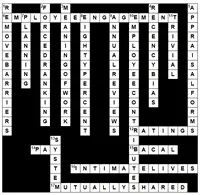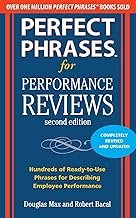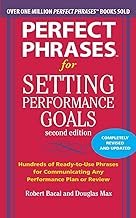Ranking Systems Or Rank Systems
While the rating system is designed to evaluate an employee along some imaginary scale, a ranking system is intended to evaluate an employee by comparing him or her with all of the other employees in similar positions within a company. The result is some indication of where the employee lies, in percentage terms, relative to his or her peers.
Depending on the form, an employee could be ranked as last in the company or first in the company or in terms of percentiles, e.g., a percentile of 55 means the employee is “better” than 55% of his or her peers. On what basis is the comparison made? That basis varies widely.
Sometimes, in its worst form, a ranking system is based on adding together the numbers from rating form items and giving an overall “performance number,” which then serves as the basis for ranking the employee.
The comparison may also be made on the basis of an observable and quantifiable number, such as sales per quarter or new clients signed up. Although rankings can be somewhat justified with simple things like sales numbers, there are a lot of problems associated with the process.
Their Value
Ranking systems have become a bit more common due to their use and endorsement by former General Electric CEO, Jack Welch, who suggested ranking employees each year and then firing the bottom 10%. There may be no arguing with his success at GE, but there’s considerable doubt that the use of a ranking system was the key to his success.
You have to go a ways to identify what ranking systems
actually contribute. One argument is that it places employees in
similar jobs in direct competition with each other; the theory is
that this competition (sometimes rather cutthroat) will improve
the performance of all involved. That’s a possibility. But the disadvantages
of such a system (outlined below) are almost
always going to outweigh any performance improvements
gained this way.
In almost all situations, ranking employees is a poor idea.
However, if it can work anywhere, it’s most likely to be where
the following conditions exist:
- • There are objective and measurable criteria on which to base rankings (e.g., money earned, customers recruited).
- • Nothing else is expected of the employees than to perform according to the specific, narrow criteria you use (e.g., make more money or recruit more customers).
- • You have no desire to have your employees work together
and help each other.
• You want a cutthroat work environment inside your company.
Their Weaknesses
Ranking systems are only as good as the validity of the criteria you use to compare employees. For example, tallying up the ratings and then ranking employees based on the sum of their ratings is mathematically unjustified and unfair. Rating systems simply aren’t precise enough.
If you use simple and specific criteria like money earned, that’s a bit better, but this doesn’t work if you’re concerned with other employee behaviors. For example, your top-ranked salesperson may make his money by cheating, sabotaging his coworkers, hiding resources, or otherwise impeding the success of his colleagues/competitors. That works if your performance objective is to have a top-ranked salesperson— but not if you want to improve overall sales levels across all salespeople. Your top-ranked salesperson may actually be costing you money due to his negative effect on those around him.
Ranking systems not only might not help you achieve your objectives, but also can create unhealthy competition among the people you need to work together. Using a ranking system tied to salary increases is the best way to create bad feelings, arguments, and even more nasty problems in the workplace.
Let’s return to the issue of improving performance. Ranking systems do not provide enough information about employee performance to help employees identify what they have to do to improve. It’s that simple. A numeric ranking only tells an employee where he or she stands in relation to other employees.
It provides no information about getting better.
It’s true that you can augment the ranking system with a process that tries to identify why the employee ranks below average. Unfortunately, however, there’s a problem here. In a ranking system, by definition, there must always be a significant number of people who are “below average.”
That’s the fatal flaw with all ranking systems. A ranking system implies that there must always be people who are below average, average, above average, and so on. You can’t have 10 people who are the best in terms of sales, right? You can have only one.
This isn’t a problem if you have a broad range of skills and abilities in your workplace and a wide spread of performance. However, that’s not always the case. In fact, if your hiring practices are good, all your employees should be skilled. The differences among them will be less than you’d find if you chose 50 people off the street at random.
So here’s the problem. What if you have employees who are all excellent and differ little in terms of productivity? The ranking system is still going to require you to label some as “best,” some as “average,” and some as “below average” or worse.
That’s nuts. Even worse, if you decide to terminate the bottom 10% of your ranked staff, it’s not likely the replacements will be better, if the bottom 10% that you let go are better than the average in other companies or in the job market.




